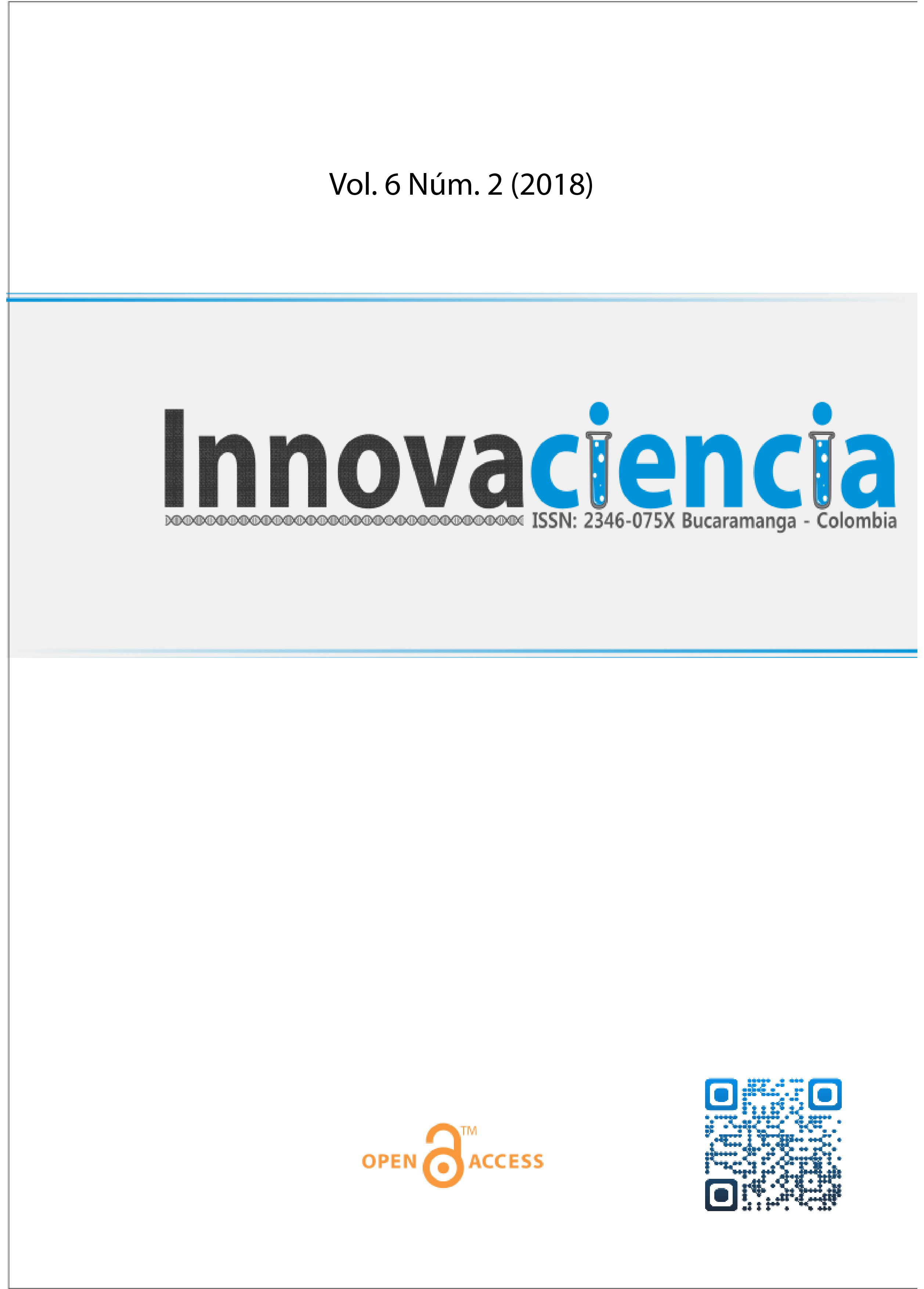Dependencia de la viscosidad de cizalladura en la concentración depseudo plasticidad (oxido de polietileno - xantano) colisión de polímero
DOI:
https://doi.org/10.15649//2346075X.482Palabras clave:
PEO, Xanthan, Viscosity, Rheological Properties.Resumen
Introduction: Its necessary to bear in mind that we life in the
word increase industrialization, therefore we make many modifications to material to getting on best characterizations. The aim of
this research is to Prepare new Pseudo Plasticity Polymer Collide.
Materials and Methods: In the present paper effects of xanthan
cellulose gum (X) on rheological properties of polyethylene oxide
polymer (PEO, 3000 Daltons) included different type of viscosity
has been investigated by using the following parameters: (Spindle:
no.1, Speed: 60 rpm and Temperature: RT), different sort of viscosity is computed for a PEO that dissolved in distilled cold water
with completely different various concentrations (0.1, 0.2 to 0.8)%
g/mL once and before adding (0.25 and 0.5) g X for every concentration. Results and Discussion: The results show that all properties of density, shear viscosity, relative viscosity, specific viscosity,
reduced viscosity, intrinsic viscosity, viscosity average mass and the
effective molecular radius have been enhanced after the addition of
xanthan. Conclusions: Addition of xanthan are often applied as
thicker mixture in coating, oil drilling and pumping of fluids attributable related pseudo physical property
Referencias
Zorana Z R, Bojana Ž B , Jovana A G , Siniša N D , Jelena M D , " Effect of the Initial Glycerol Concentration in the Medium on the Xanthan Biosynthesis", Original Scientific Paper, 2014; 45: 239-246. https://doi.org/10.2298/APT1445239R
Biswal R, Singh P " Characterization of Carboxymethyl Cellulose and Polyacrylamide Graft Copolymer", Carbohyd Polym., 2004; 57:379-387. https://doi.org/10.1016/j.carbpol.2004.04.020
Abdul-Kareem J, Safa A," Study the Effect of Adding PVA on Some Physical Properties of CMC Polymer as Aqueous Solutions", Advances in Physics Theories and Applications, 2012; 5:1-8.
Abdul-Kareem A, Rawaa M, Burak Y," Study the Rheological and Mechanical Properties of PVA/NH4Cl by Ultrasonic", Chemistry and Materials Research, IISTE, 2011; 1,1:20-26.
Illiger R, Rao P, Demappa, T, " Miscibility Studies of HPMC/PVA Blends in Water by Viscosity, Density, Refractive Index and Ultrasonic Velocity Method, Carbohydrate Polymer", 2008; 15, 3: 779-782. https://doi.org/10.1016/j.carbpol.2008.04.036
Asia K," Effect of Adding Polyacrylamide on Some Physical Properties of Polyvinal Alcohol and its Ability for Industrial Applications", M.Sc. thesis, Babylon University, College of Science, Department of Physics, 2015.
Gurul S, Prasad P, Shivakumar R, Rai K," Studies on The Compatibility of Pullulan - Carboxymethyl Cellulose Blend Using Simple Techniques", Malaysian Polymer Journal, 2008; 3, 2: 13-23.
Abdali K," Enhancement of Some Physical Properties of Polyethylene Glycol by Adding Some Polymeric Cellulose Derivatives and its Applications", Ph.D. thesis, Babylon University, College of Science, Department of Physics, 2015.
Palani R, Kalavathy S, " Volumetric Compressibility and Transport Studies on Molecular Interactions of Mono, Di and Tri Saccharine in Aqueous Sodium Butyrate Mixtures at 303.15 K", Advances in Applied Science Research, 2011; 2, 2: 146-155.
Benchabane A, Bekkour K, "Rheological Properties of Carboxymethyl Cellulose Solution", Springer Journal, 2008; 286, 10: 1173-1180. https://doi.org/10.1007/s00396-008-1882-2
Jassim H, "Effect of Polyacrylamide on Physical Properties of Carboxymethyl Cellulose", M.Sc. thesis, Babylon University, College of Education for Pure Sciences, 2014.
Irina L, Maria B, Simona M, " Intrinsic Viscosity of Aqueous Polyvinyl Alcohol Solutions", Revue Roumaine de Chimie., 2009; 54: 981-986.
Ahmed S, "Study of The Physical Properties of Polymer Carrboxymethyl Cellulose by Addition Polyvinyl Alcohol and Ability to Industrial Applications", M.Sc. thesis, Babylon University, College of Science, 2012
Descargas
Publicado
Cómo citar
Descargas
Número
Sección
Licencia
Todos los artículos publicados en esta revista científica están protegidos por los derechos de autor. Los autores retienen los derechos de autor y conceden a la revista el derecho de primera publicación con el trabajo simultáneamente licenciado bajo una Licencia Creative Commons Atribución-NoComercial 4.0 Internacional (CC BY-NC 4.0) que permite compartir el trabajo con reconocimiento de autoría y sin fines comerciales.
Los lectores pueden copiar y distribuir el material de este número de la revista para fines no comerciales en cualquier medio, siempre que se cite el trabajo original y se den crédito a los autores y a la revista.
Cualquier uso comercial del material de esta revista está estrictamente prohibido sin el permiso por escrito del titular de los derechos de autor.
Para obtener más información sobre los derechos de autor de la revista y las políticas de acceso abierto, por favor visite nuestro sitio web.
















